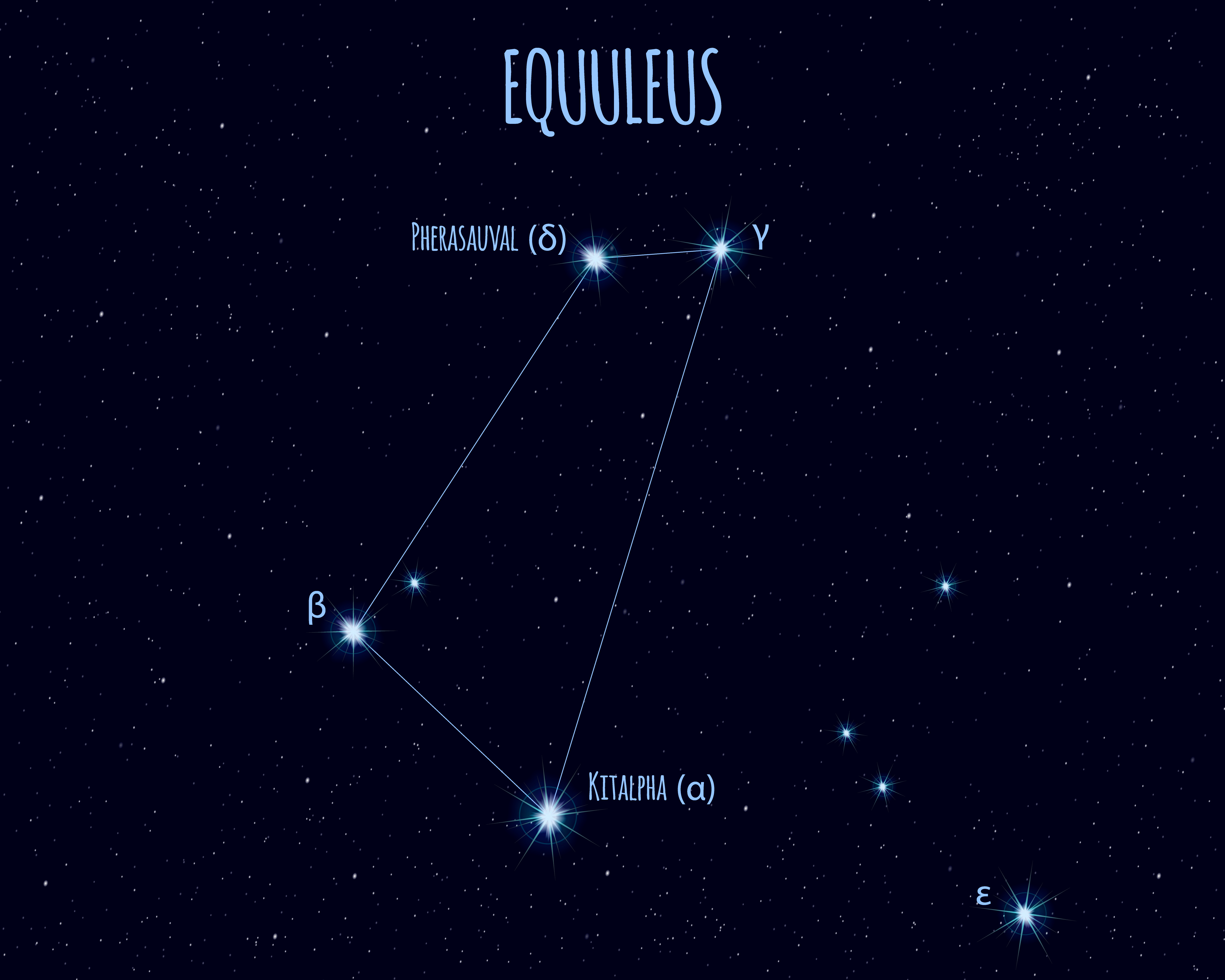Known as the "little horse" constellation, Equuleus is one of the smallest constellations in the sky, but that doesn’t make it any less fascinating. Whether you’re new to stargazing or already have some experience, this guide shares everything you need to know about Equuleus, from its location to its history, and the stars that make up this modest but captivating formation.
Jump to:
Recommended for you!
Best SellersWhat is the Equuleus Constellation?
Equuleus is a faint constellation located in the northern sky, easily overlooked by casual stargazers because of its small size and dim stars. However, it has held a place in astronomy for centuries, being one of the 48 constellations listed by the ancient Greek astronomer Ptolemy.
What is Special About Equuleus Constellation?

While it might not be as prominent as the Great Bear or Orion, Equuleus holds a unique place in the night sky. It’s the second smallest constellation, covering just 72 square degrees of the celestial sphere. Its relatively faint stars mean it can be challenging to spot without a telescope or ideal conditions, but for astronomy enthusiasts, it’s a rewarding constellation to locate.
One interesting fact is that despite its small size, Equuleus represents a horse’s head, specifically the foal or “little horse,” giving the constellation its name. It’s positioned just ahead of Pegasus, the much larger horse constellation, and is thought to represent a companion to Pegasus in Greek mythology.
What Does Equuleus Look Like?
When looking at Equuleus, don’t expect the kind of vivid pattern you might see in constellations like Orion or the Big Dipper. Equuleus is composed of a relatively faint group of stars, none of which are brighter than magnitude 4. However, when the skies are clear, and you know where to look, its four main stars form a somewhat square-shaped pattern, representing the head of a foal.
How Far is Equuleus from Earth?

Equuleus is approximately 460 light-years away from Earth, which means the light from the stars in this constellation takes centuries to reach us. This distance puts it in line with many other constellations that are visible to the naked eye, though it remains fainter due to the stars' relatively low luminosity.
The Equuleus Constellation Myth
Like many constellations, Equuleus has its roots in Greek mythology. The name “Equuleus” comes from the Latin word for “little horse” or “foal,” and it is often thought to represent a foal standing near the larger horse, Pegasus.
Equuleus' Stars

Although Equuleus isn’t home to any particularly bright stars, it does have several interesting ones worth mentioning:
- Kitalpha (Alpha Equulei): This is the brightest star in Equuleus, though it’s still relatively dim, with a magnitude of 3.92. Kitalpha is a binary star, meaning it consists of two stars orbiting each other. Its name, Kitalpha, means “part of a horse” in Arabic, highlighting its equine connection.
- Delta Equulei: Another notable binary star in the constellation, Delta Equulei, sits at a distance of around 60 light-years from Earth. It’s actually a pair of stars that orbit each other every 5.7 years.
Though these stars aren’t as well-known as those in larger constellations, they make Equuleus an exciting area of study for those interested in the intricacies of binary systems.
Nebulae in the Equuleus Constellation
While Equuleus is a small and faint constellation, it doesn’t contain any significant deep-sky objects, such as nebulae or galaxies, that are easily visible to amateur astronomers. Most of the objects within Equuleus are distant and require powerful telescopes to observe. That said, this doesn’t take away from the constellation’s charm—there’s still plenty to appreciate in its simplicity.
Finding Equuleus in the Sky

Equuleus is best viewed from most parts of the world, as it is visible between latitudes +90° and -80°. The optimal time to observe this constellation is during late summer and early autumn when it sits higher in the sky, offering a clearer view.
Locating Equuleus
To find Equuleus, begin by identifying the much larger and more prominent Pegasus constellation. Equuleus is located just to the west of Pegasus, slightly north of Aquarius. This makes it easier to spot once you’ve located Pegasus, especially when skies are clear.
Viewing Equuleus with Binoculars or a Telescope
- With Binoculars: Although its stars are faint, using binoculars will make them easier to see, allowing you to trace Equuleus’ distinct shape.
- With a Telescope: A small telescope will offer a more detailed view of the constellation, bringing its faint stars, like Alpha Equulei, into sharper focus.
Best Viewing Conditions
For the best experience, try to observe Equuleus in a location with minimal light pollution. A clear, dark sky on a moonless night will give you the optimal conditions to appreciate this elusive constellation.
Recommended for you!
Best SellersFun Facts About Equuleus
- Equuleus is one of the oldest known constellations, dating back to ancient Greek times when it was first catalogued by Ptolemy in the 2nd century.
- Its Latin name, Equuleus, translates directly to “little horse” or “foal.”
- The constellation covers a very small part of the sky—just 0.174% of the celestial sphere—making it the second smallest constellation after Crux, the Southern Cross.
- Although it’s faint and easy to overlook, finding Equuleus can be a rewarding experience for those looking to challenge their stargazing skills.
Study Astronomy for £29
The Equuleus constellation is a stunning and significant part of the night sky, offering beauty and rich history. If you're inspired to delve deeper into the wonders of astronomy, why not explore the Astronomy Diploma Course with Centre of Excellence? Whether you're a beginner or someone with more experience, this course will guide you through everything you need to know about the stars, constellations, and galaxies. And for a limited time, you can enrol for just £29!













